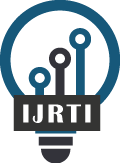|
International Journal for Research Trends and Innovation
International Peer Reviewed & Refereed Journals, Open Access Journal
ISSN Approved Journal No: 2456-3315 | Impact factor: 8.14 | ESTD Year: 2016
Scholarly open access journals, Peer-reviewed, and Refereed Journals, Impact factor 8.14 (Calculate by google scholar and Semantic Scholar | AI-Powered Research Tool) , Multidisciplinary, Monthly, Indexing in all major database & Metadata, Citation Generator, Digital Object Identifier(DOI)
|
Issue: December 2025
Volume 10 | Issue 12
Review Result and Publication of Paper within : 2-3 days
Click Here For more DetailsFor Authors
Forms / Download
Published Issue Details
Editorial Board
Other IMP Links
Facts & Figure
Impact Factor : 8.14
Issue per Year : 12
Volume Published : 10
Issue Published : 115
Article Submitted : 19456
Article Published : 8041
Total Authors : 21252
Total Reviewer : 769
Total Countries : 144
Indexing Partner
Licence
This work is licensed under a Creative Commons Attribution-NonCommercial 4.0 International License







|
Published Paper Details
|
|
| Paper Title: | Assessment of Heavy Metal Contamination in Vegetables Grown with Treated Wastewater in Ludas, Hisar, Haryana: A Comprehensive Study |
| Authors Name: | Dr. Sunita Lega |
| Download E-Certificate: | Download |
| Author Reg. ID: |
IJRTI_188952
|
| Published Paper Id: | IJRTI1912016 |
| Published In: | Volume 4 Issue 12, December-2019 |
| DOI: | |
| Abstract: | Abstract: Municipal wastewater is predominantly utilized for crop irrigation, particularly in periurban ecosystems, owing to its ready availability, disposal challenges, and the scarcity of fresh water. The use of wastewater in irrigation is known to significantly contribute to the presence of heavy metals in soil. These metals pose a substantial threat due to their non-biodegradable nature, prolonged biological half-lives, and their propensity to accumulate in various body tissues. The high solubility of heavy metals in water makes them highly toxic, even at low concentrations, as there is no efficient mechanism for their elimination from the body.The excessive build-up of heavy metals in agricultural soils through wastewater irrigation can lead to soil contamination. Leafy vegetables are particularly prone to accumulating heavy metals compared to grain or fruit crops. The absorption and accumulation of heavy metals by vegetables, both in their edible and inedible parts, can reach levels that pose clinical risks to both animals and humans consuming these metal-enriched plants. This study aims to compare the potential for heavy metal accumulation in some commonly grown vegetables in Ludas, Hisar. Given the widespread practice of crop irrigation with wastewater in India, the research also investigates the impact of wastewater irrigation on the concentration of accumulated metals to which humans may be exposed. |
| Keywords: | Keywords: Non-biodegradable, Absorption, Accumulation, Heavy Metals. |
| Cite Article: | "Assessment of Heavy Metal Contamination in Vegetables Grown with Treated Wastewater in Ludas, Hisar, Haryana: A Comprehensive Study", International Journal of Science & Engineering Development Research (www.ijrti.org), ISSN:2455-2631, Vol.4, Issue 12, page no.82 - 84, December-2019, Available :http://www.ijrti.org/papers/IJRTI1912016.pdf |
| Downloads: | 000205161 |
| ISSN: |
2456-3315 | IMPACT FACTOR: 8.14 Calculated By Google Scholar| ESTD YEAR: 2016 An International Scholarly Open Access Journal, Peer-Reviewed, Refereed Journal Impact Factor 8.14 Calculate by Google Scholar and Semantic Scholar | AI-Powered Research Tool, Multidisciplinary, Monthly, Multilanguage Journal Indexing in All Major Database & Metadata, Citation Generator |
| Publication Details: |
Published Paper ID: IJRTI1912016
Registration ID:188952
Published In: Volume 4 Issue 12, December-2019
DOI (Digital Object Identifier):
Page No: 82 - 84 Country: Hisar, Haryana, India Research Area: Chemistry Publisher : IJ Publication Published Paper URL : https://www.ijrti.org/viewpaperforall?paper=IJRTI1912016 Published Paper PDF: https://www.ijrti.org/papers/IJRTI1912016 |
| Share Article: | |
|
Click Here to Download This Article |
|
| Article Preview | |
|
|
|
Major Indexing from www.ijrti.org
| Google Scholar | ResearcherID Thomson Reuters | Mendeley : reference manager | Academia.edu |
| arXiv.org : cornell university library | Research Gate | CiteSeerX | DOAJ : Directory of Open Access Journals |
| DRJI | Index Copernicus International | Scribd | DocStoc |
ISSN Details
 |
 |
ISSN: 2456-3315
Impact Factor: 8.14 and ISSN APPROVED,
Journal Starting Year (ESTD) : 2016
DOI (A digital object identifier)
 Providing A digital object identifier by DOI.ONE How to Get DOI? |
Conference
Open Access License Policy
Important Details
Join RMS/Earn 300
WhatsApp
Click Here
Click Here
Indexing Partner |
|||
| Copyright © 2025 - All Rights Reserved - IJRTI | |||






